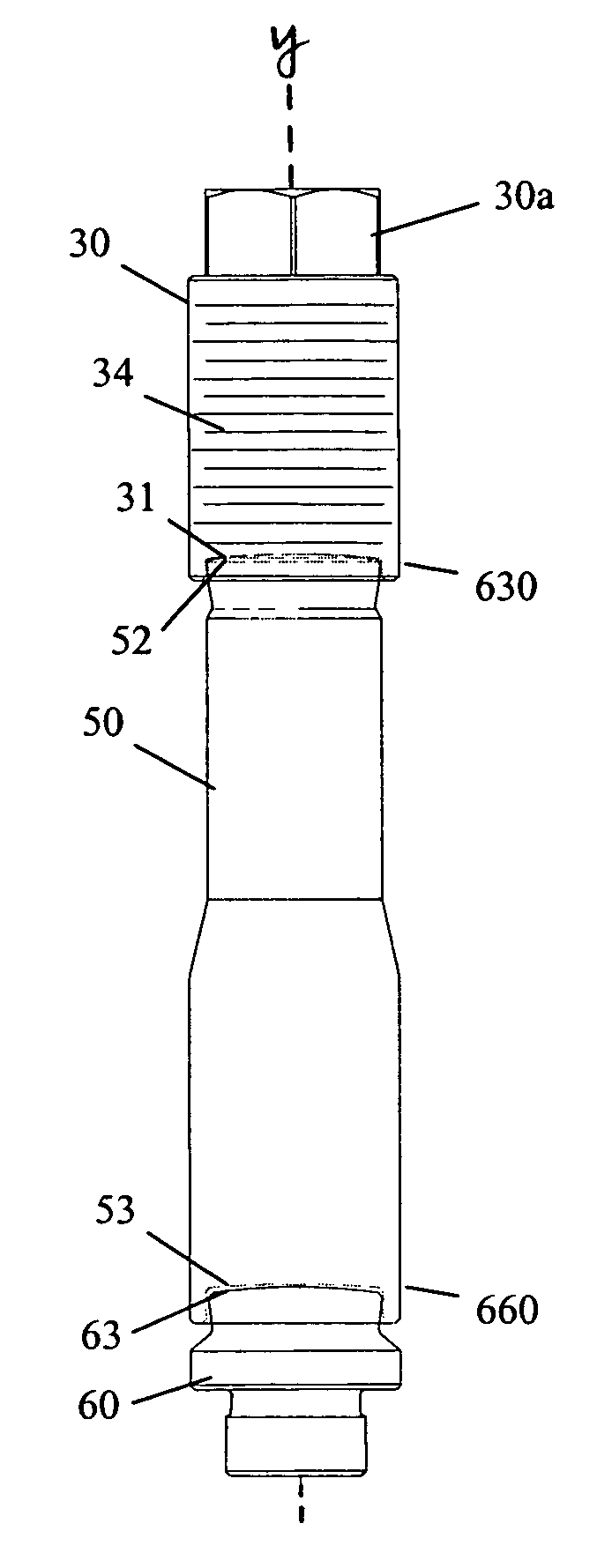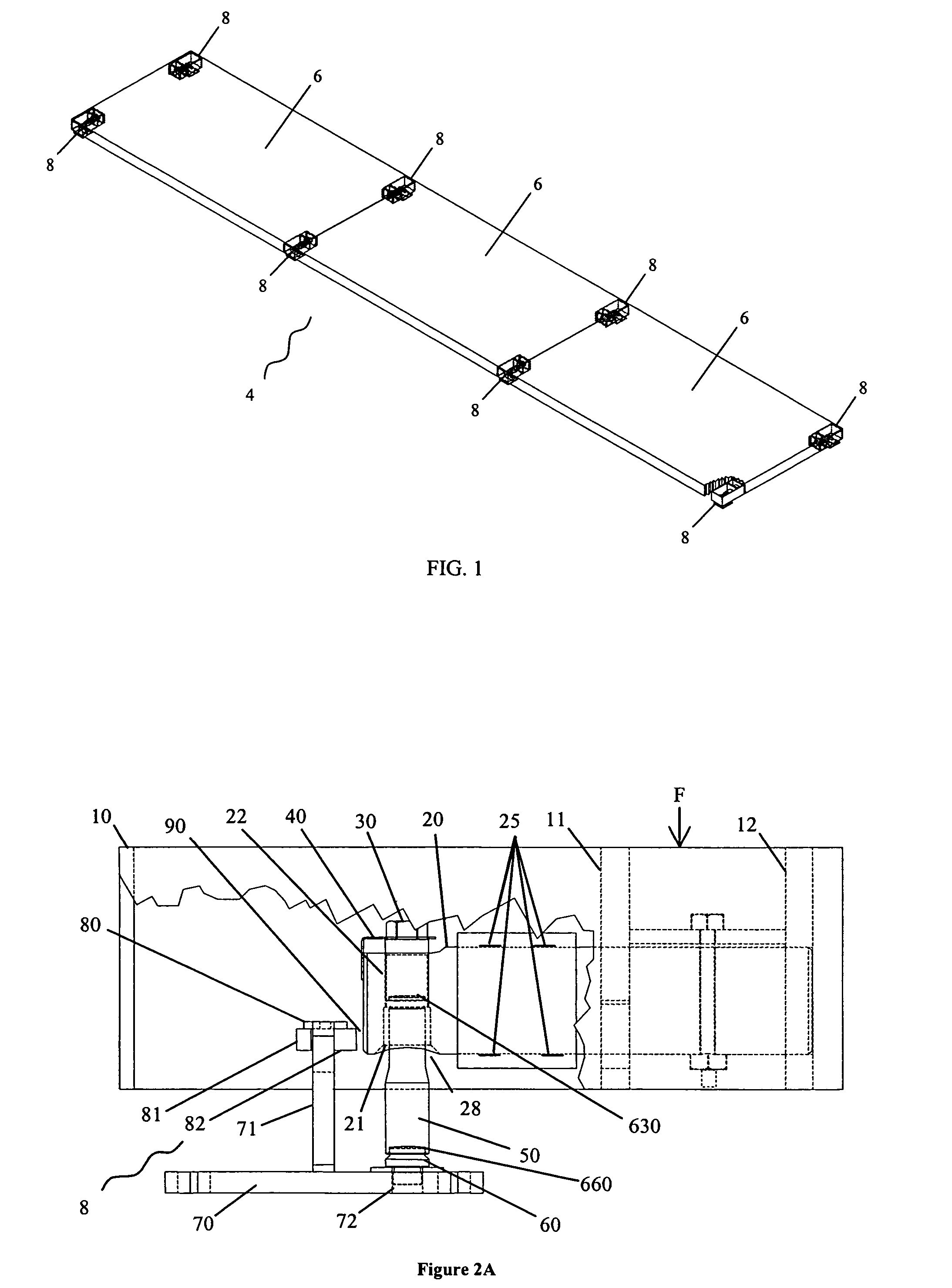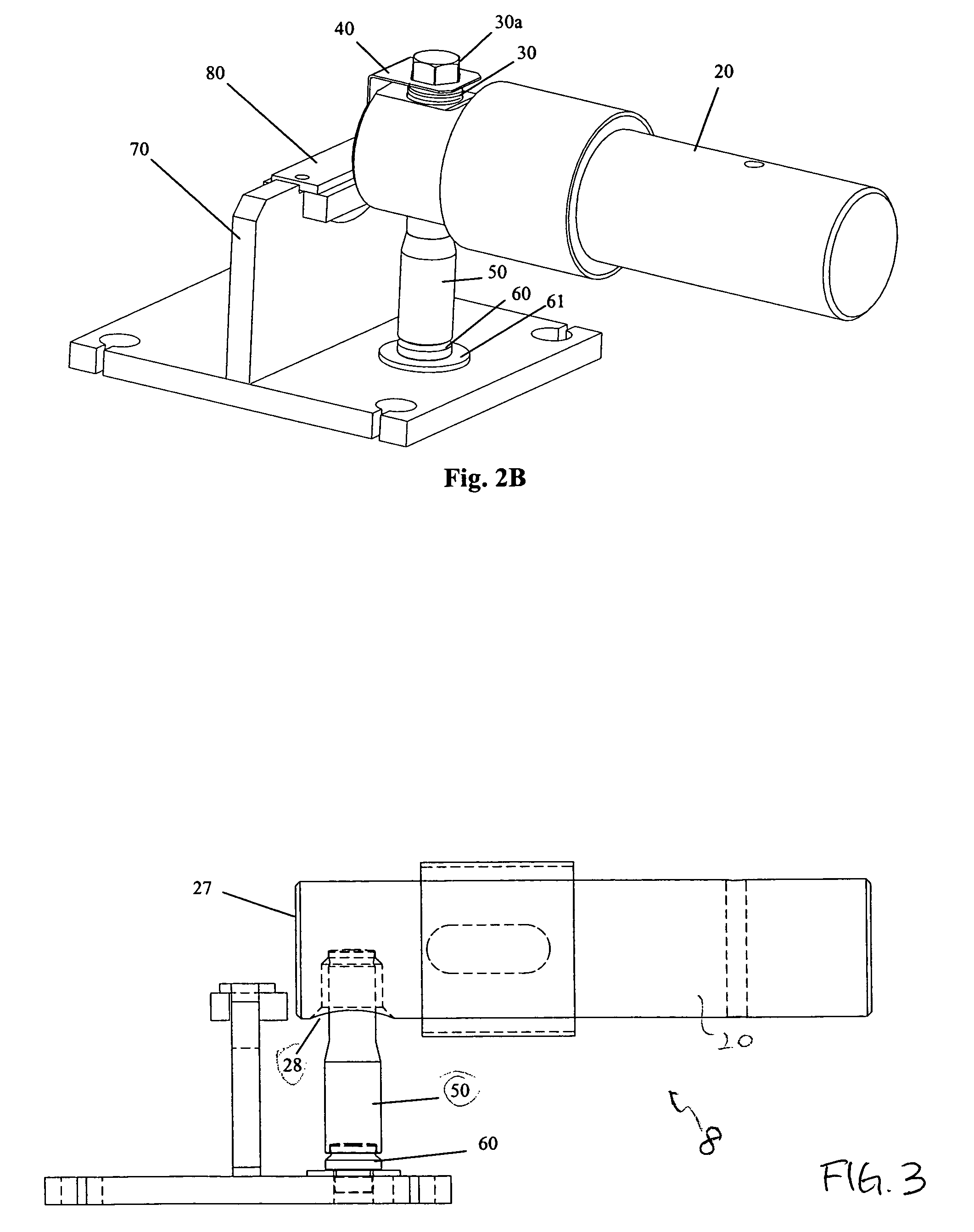Support structure for a load-bearing device
a support structure and load-bearing technology, applied in the direction of force measurement, force/torque/work measurement apparatus, instruments, etc., can solve the adverse effect of horizontal force on measurement accuracy, scales, and other problems, so as to reduce the horizontal force components, reduce the effective height, and reduce the effect of horizontal for
- Summary
- Abstract
- Description
- Claims
- Application Information
AI Technical Summary
Benefits of technology
Problems solved by technology
Method used
Image
Examples
Embodiment Construction
[0030]Embodiments of the invention are described herein in the context of a load cell and more specifically in the context of a multi-load-cell scale. However, it is to be understood that the embodiments provided herein are just preferred embodiments, and the scope of the invention is not limited to the applications or the embodiments disclosed herein. For example, the supporting structure may be used in any application where it is desirable to reduce diverse forces that act in a direction other than the direction of interest. Also, although cylindrical embodiments of the support structure are disclosed, the support structure may have any shape that suits a particular application. Although oblate spheroid surfaces are disclosed, a person of ordinary skill in the art will understand that any suitable rotated surface with a non-constant curvature, such as parabolic, hyperbolic, sinusoidal, and exponential surfaces, may function as the invention depending on the application and deforma...
PUM
| Property | Measurement | Unit |
|---|---|---|
| radii of curvature | aaaaa | aaaaa |
| force | aaaaa | aaaaa |
| forces | aaaaa | aaaaa |
Abstract
Description
Claims
Application Information
 Login to View More
Login to View More - R&D
- Intellectual Property
- Life Sciences
- Materials
- Tech Scout
- Unparalleled Data Quality
- Higher Quality Content
- 60% Fewer Hallucinations
Browse by: Latest US Patents, China's latest patents, Technical Efficacy Thesaurus, Application Domain, Technology Topic, Popular Technical Reports.
© 2025 PatSnap. All rights reserved.Legal|Privacy policy|Modern Slavery Act Transparency Statement|Sitemap|About US| Contact US: help@patsnap.com



